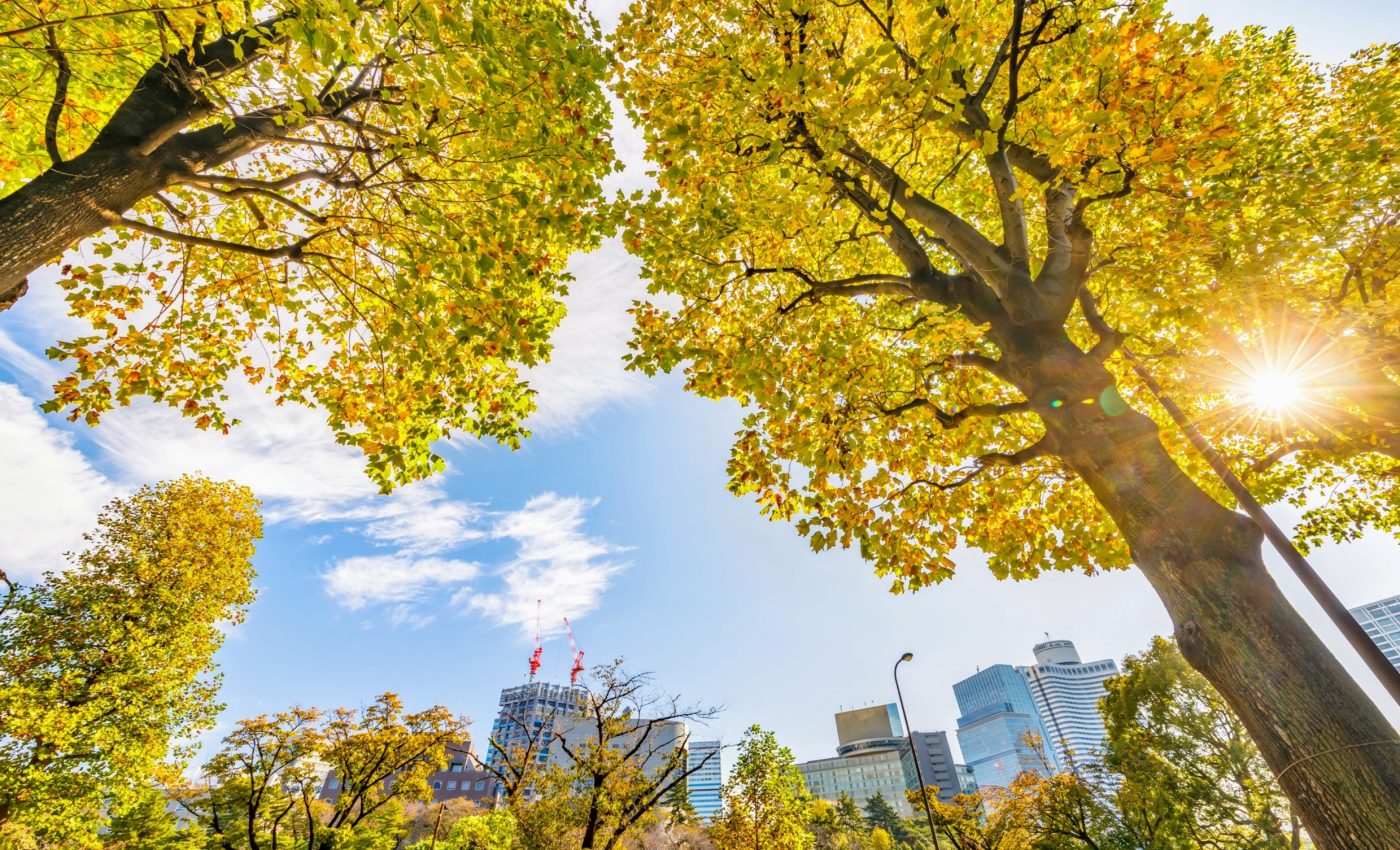
City greening: Predicting the cooling effects of trees
As cities face rising temperatures amplified by urban structures like concrete and asphalt, initiatives to plant trees have gained momentum. Yet, while the benefits of city greening are well-recognized, many such efforts have been based on approximations.
A recent study published in the journal Proceedings of the National Academy of Sciences provides a refined tool to help urban planners set specific and scientifically sound city-wide greening targets.
Cooling effects of city greening
Led by researchers Jia Wang, Weiqi Zhou, and Yuguo Qian from the Chinese Academy of Sciences, and co-authored by Steward Pickett, an urban ecologist at Cary Institute of Ecosystem Studies, the study examines the cooling effects of urban trees at different scales.
“Trees offer many benefits to cities, and cooling is one of them,” said Pickett. “Trees are good at cooling because they pump a lot of water from the ground into the air, and when that water evaporates at the leaf surface, it absorbs a vast amount of heat. That’s just the physics of evaporation. The shade provided by trees also helps with cooling.”
How many trees are needed?
Most research on the cooling effect of trees has historically focused on specific neighborhoods or streets. For instance, studies have shown that a 1% increase in tree canopy can lower nearby temperatures by 0.04 to 0.57 degrees Celsius.
“That’s valuable, but planners and decision makers are thinking about the whole city. They’re asking, ‘How much tree canopy do we need for the whole city? What happens when we scale it up?’ And that information hasn’t been available,” Pickett said.
The goal of the study was to assess if findings from smaller areas could be applied at a city-wide level.
The researchers analyzed satellite imagery and temperature data from four cities with varying climates: Beijing and Shenzhen in China, and Baltimore and Sacramento in the United States. These cities represented different climate zones: temperate, subtropical, and Mediterranean.
Measuring the cooling effects of urban trees
The team divided each city into pixelated sections approximately the size of a city block. For each pixel, they assessed land surface temperatures and tree coverage.
The researchers then expanded their analysis to larger areas, such as neighborhoods and entire cities, to measure how the cooling efficiency – temperature reduction associated with a 1% increase in tree canopy – shifted with scale.
City greening to enhance cooling
The results revealed that the cooling effect of urban trees increased as the scale expanded, but the rate of increase was slower at larger scales.
In Beijing, for instance, a 1% increase in tree canopy at the block level led to a temperature drop of 0.06 degrees.
However, at the city-wide level, the same increase resulted in a reduction of about 0.18 degrees. The added benefit at larger scales likely comes from larger groups of trees, which collectively enhance cooling.
“We found that cooling efficiency follows a power law across scales – from as small as 120 by 120 meters to as large as regions covering the entire city,” said co-author Weiqi Zhou.
“The relationship holds across all four of the studied cities, which are in very different climates. This suggests that it could be used to predict the amount of additional tree cover needed to achieve specific heat mitigation and climate adaptation goals in cities worldwide.”
Implications for city planning
The study’s findings offer urban planners a powerful tool to establish city-wide tree canopy targets aimed at combating extreme heat.
For instance, the researchers estimated that Baltimore could lower land surface temperatures by 0.23°C by increasing its tree canopy by 1%. To achieve a reduction of 1.5°C, the city would need to increase tree coverage by 6.39%.
While this information is invaluable for high-level decision-making, Pickett cautioned that it’s not a one-size-fits-all solution.
“This paper doesn’t tell you where to put the trees,” he said. “That’s another sort of analysis, which would have to involve a lot more social information and engagement with communities or with individual property owners.”
Ensuring equitable distribution of trees across cities and involving communities in planning are essential for maximizing the benefits.
Strategic planning for city greening
Pickett suggested expanding the research to include cities with different climate types to better understand the broader applicability of these findings.
Additionally, studying how effective tree planting will be in future conditions as climate change drives higher temperatures and more frequent droughts is a crucial next step.
The study reinforces the idea that tree-planting, while an effective nature-based solution, requires strategic planning to yield the best results.
With these new insights, cities can move beyond trial and error to make more informed decisions that address the urban heat crisis.
—–
Like what you read? Subscribe to our newsletter for engaging articles, exclusive content, and the latest updates.
Check us out on EarthSnap, a free app brought to you by Eric Ralls and Earth.com.
—–













